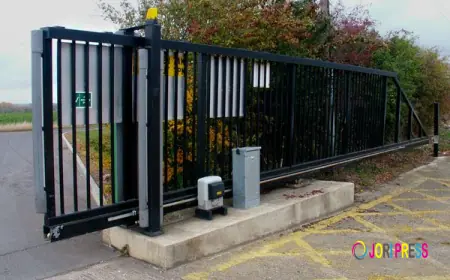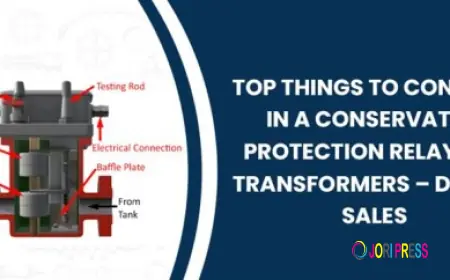Ensuring Commitment by Agreeing on Realistic Audit Corrections

In every workplace, especially in high-risk industries, safety audits are vital. These audits uncover hidden risks, unsafe practices, and compliance gaps. But here’s the catch: identifying the problem is only half the battle — the real challenge lies in ensuring commitment to fixing it.
Imagine a factory where workers are constantly exposed to hazardous chemicals. An audit report reveals that safety equipment is outdated, and ventilation is poor. Management promises to "look into it." Weeks go by, and nothing changes. This common scenario highlights why agreeing on realistic audit corrections is not just necessary — it's non-negotiable for workplace safety.
Before diving deeper, it’s worth mentioning that for professionals looking to upskill in workplace hazard management, the NEBOSH course in Pakistan offers valuable insights and real-world approaches that align perfectly with practical safety improvements.
Why Are Realistic Audit Corrections Important?
Corrective actions following an audit should never be idealistic or vague. When recommendations are unrealistic — due to budget, manpower, or operational constraints — they simply won’t get done. The result? Risks remain, workers stay in danger, and the organization continues to fail compliance standards.
Realistic corrections help:
-
Prioritize hazards effectively
-
Improve accountability
-
Build trust between management and safety teams
-
Support long-term cultural change
Pro Tip: When audit teams and management collaborate early, they can turn good intentions into solid, actionable plans.
The Link Between Safety Audits and Hazard Control
A safety audit is like an x-ray — it reveals what’s beneath the surface. But if no treatment follows, the problem festers. Whether it’s exposed wiring in a warehouse or chemical storage without proper labels, these hazards pose serious threats.
Instead of generic recommendations like “improve labeling practices,” a realistic correction would be: “Re-label all chemical containers in Zone B using GHS standards by the end of the month, assigned to the Safety Supervisor.”
This level of clarity and realism ensures that corrective actions don’t gather dust in a report — they actually get done.
Step-by-Step: How to Agree on Realistic Audit Corrections
Step 1: Involve the Right People from the Start
Audit results shouldn't be discussed only among auditors and senior management. Include supervisors, frontline workers, and safety reps. Their input will ground the correction in everyday reality.
Anecdote: In a textile mill, auditors recommended replacing all fire extinguishers within a week. The facilities manager, however, pointed out that new equipment would take three weeks to procure. Instead of rushing the change, they agreed on a phased implementation with temporary extinguishers — everyone won.
Step 2: Understand the Root Cause
A correction is only useful if it addresses the real problem. If a worker isn't wearing PPE, is it due to laziness, or is the PPE uncomfortable or unavailable? By digging deeper, the corrective action can be more effective.
Step 3: Use SMART Principles
Audit corrections should be:
-
Specific
-
Measurable
-
Achievable
-
Realistic
-
Time-bound
Example: “Install guardrails on mezzanine level by September 15, assigned to Maintenance Team.”
Step 4: Assign Clear Responsibilities
Corrections without ownership are like ships without captains. Every action item should include:
-
Who is responsible
-
Deadline
-
Resources required
This step alone significantly boosts follow-through rates.
Step 5: Document Everything
Use an audit correction log. It should include:
-
Findings
-
Agreed corrections
-
Assigned person
-
Timeline
-
Completion status
This log will serve as proof of compliance and help track progress effectively.
Step 6: Review Progress Regularly
Weekly or bi-weekly reviews help catch delays early and adjust course if needed. It also keeps everyone accountable.
Turning Agreements into Long-Term Safety Culture
Agreeing on corrections isn’t just a checkbox. It’s a stepping stone to a proactive safety culture. Workers start seeing their feedback valued. Managers become more transparent. Safety stops being a rule — it becomes a habit.
Anecdote: A logistics company once used to ignore minor audit findings. After one serious injury involving a faulty staircase, they began treating every audit suggestion seriously. Within months, their incident rate dropped by 60%. Why? Because they made a habit of implementing realistic corrections, not ignoring them.
Challenges and How to Overcome Them
Resistance to Change
Some managers fear the cost or disruption corrective actions may cause. Overcome this by showing the long-term ROI — fewer incidents mean fewer lawsuits, lower insurance premiums, and better employee morale.
Budget Constraints
If a correction seems too expensive, prioritize. Can you fix part of the problem now and plan the rest for next quarter? Small wins still save lives.
Lack of Time
Time is tight in every business, but safety cannot wait. Integrate audit corrections into regular operations. Use technology to track and remind teams about deadlines.
Building Confidence in the Process
When workers and managers see that audit corrections are practical and achievable, they are more likely to stay committed. They stop viewing audits as punishments and start seeing them as safety tools.
If you’re managing workplace hazards, whether in manufacturing, logistics, or healthcare, taking professional training helps a lot. The NEBOSH course in Pakistan empowers safety professionals with strategies to design practical corrections that stick.
Want to learn more about designing actionable safety measures? Explore the NEBOSH safety course in Pakistan for in-depth knowledge and real-world applications. It's the first step toward becoming a safety leader.
Final Thoughts
In safety, nothing is more dangerous than inaction. It’s not enough to perform audits and identify risks. Unless organizations agree on realistic corrections, hazards will continue to threaten lives, productivity, and reputation.
Involve the right people. Be specific. Set deadlines. Monitor progress. These aren't just best practices — they are life-saving actions.
By making realistic commitments, you’re not just ticking boxes — you’re creating a safer, smarter, and more responsible workplace.
What's Your Reaction?
 Like
0
Like
0
 Dislike
0
Dislike
0
 Love
0
Love
0
 Funny
0
Funny
0
 Angry
0
Angry
0
 Sad
0
Sad
0
 Wow
0
Wow
0















































